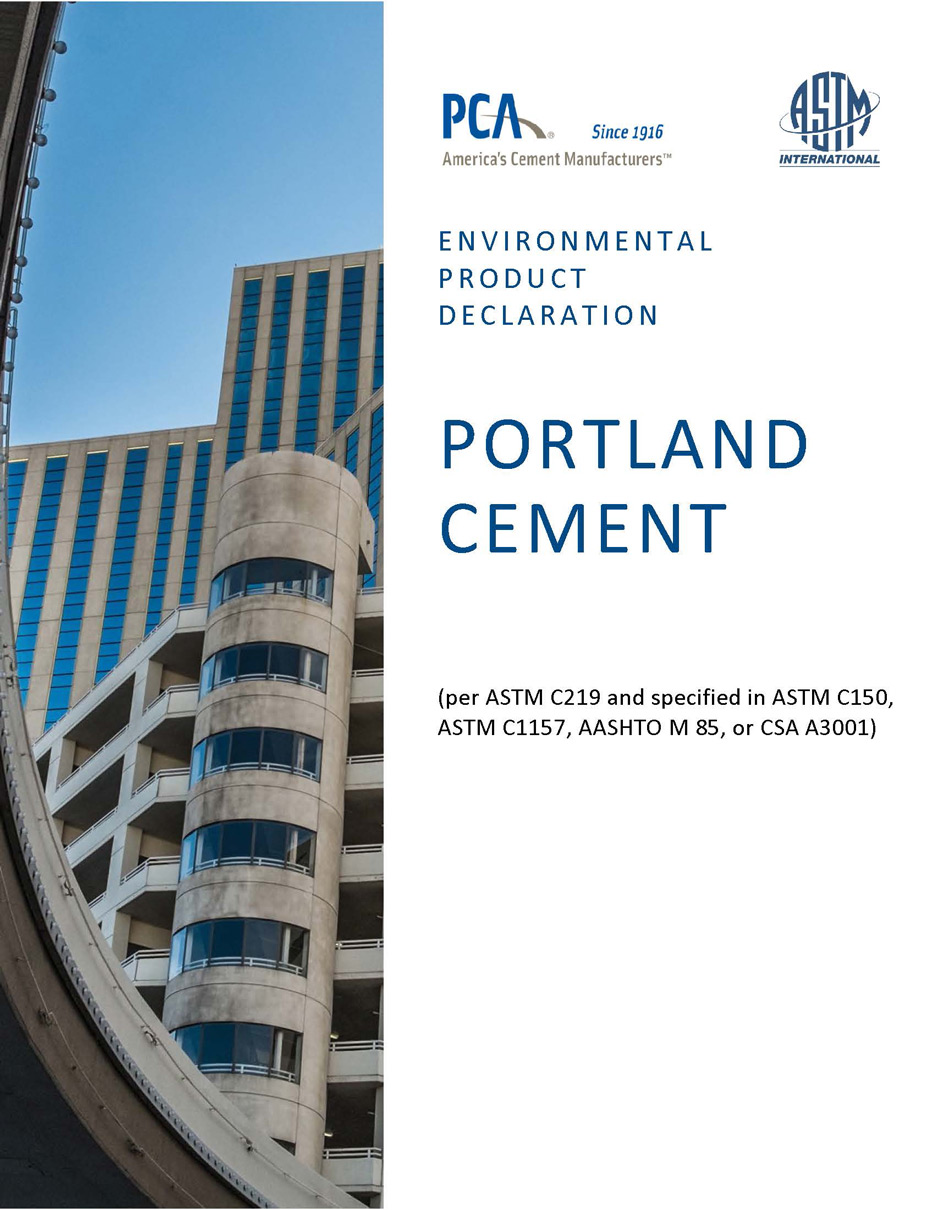Sources: Portland Cement Association, Washington, D.C.; CP staff
New Industry-Wide Environment Product Declarations (IW-EPDs) for Portland Cement, Portland-Limestone Cement, Blended Hydraulic Cement and Masonry Cement offer stakeholders across private and public construction markets an exhaustive profile of material, fuel and energy factors attending production of the key ingredient in concrete, grout and mortar. The documents inform updates to companion EPD that ready mixed and manufactured concrete producers, along with bulk or packaged dry mix providers, offer for promotion, reference or contract compliance.
With oversight of publisher and EPD Program Operator ASTM International, the Portland Cement Association has prepared the IW-EPDs according to the most current Global Cement and Concrete Association and International Organization for Standardization guidelines. The new documents most notably reference the Product Category Rule for Preparing an Environmental Product Declaration for Portland, Blended Hydraulic, Masonry, Mortar, and Plastic (Stucco) Cements, V3.1, September 2020. The new IW-EPDs embody material, fuel and energy data from 19 PCA producer members. Collectively, they offer representative operating metrics behind ASTM C150, C595 and C91 material processing and finishing: Portland Cement EPD (56 plants accounting for 64 percent of 2019 U.S. industry production); Portland-Limestone Cement EPD (15 plants, 50 percent of industry total); Blended Hydraulic Cement EPD (22 plants, 80 percent of industry total); and, Masonry Cement (32 plants, 46 percent of industry total).
Valid March 2021-2026, the IW-EPDs demonstrate a continued reduction in greenhouse gas emissions (GHG) associated with U.S. cement and clinker production. Compared to figures in 2016 EPD covering ASTM C150, C595 and C91 materials, GHG emissions for portland, blended and masonry cements decreased by 11.3 percent, 16.8 percent and 14.9 percent, respectively. The Portland-Limestone Cement EPD, premiering this year, presents GHG figures indicating the prospects for a blended cement, with 5-15 percent ground limestone content, with carbon footprint 8.2 percent below that of portland cement.
“PCA and its members are committed to sustainability and driving down the carbon intensity of our operations,” says PCA CEO Mike Ireland. “The development and reduction results of these EPDs show the industry’s progress towards our climate ambition of becoming carbon neutral by 2050.”
Related articles
Lehigh issues first EPD based on Cement Product Category Rule 2.0
NRMCA meets latest reporting standards in new Industry-Wide EPD
NPCA, PCI, CPCI pen Environmental Product Declarations in principal categories





